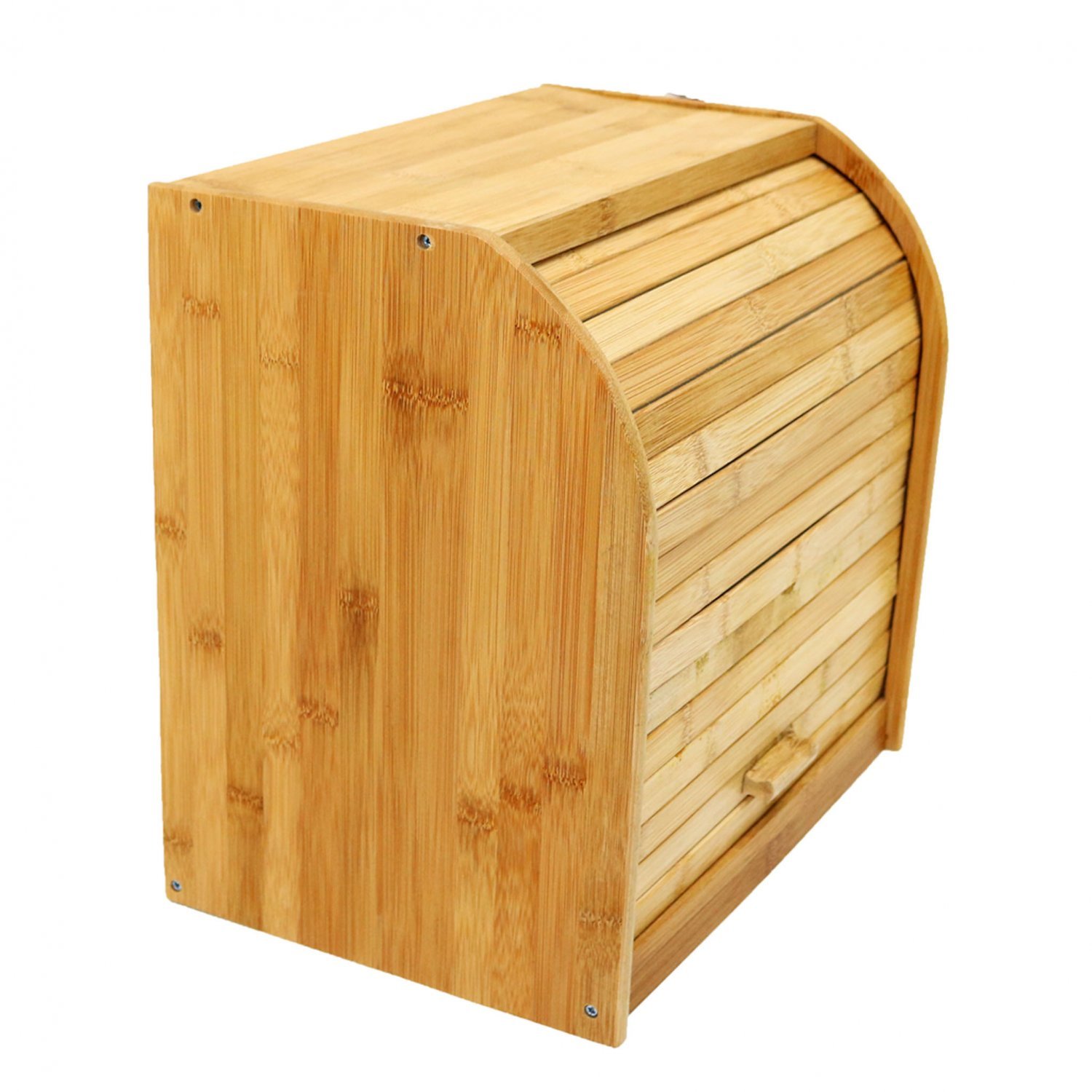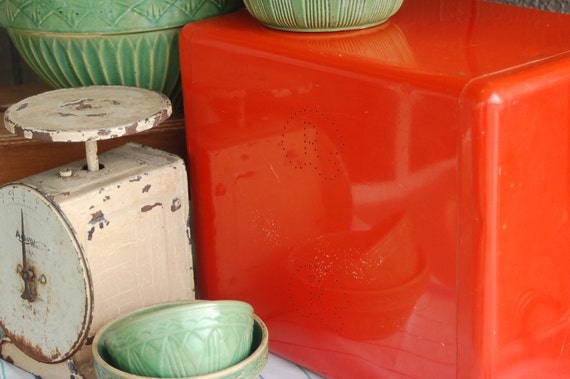

The bread in this box seemed drier after two days. The Eva Solo box had a different sort of humidity problem: the stylish floppy flap didn't close tightly, and was so large that when opened it completely released the moisture. The breads left in paper bags had soggy, chewy crusts. The unwrapped breads seemed to stay the freshest their crusts were still acceptably crisp three days later. Because of the humidity that builds up, paper gets damp.

Still, the 19-by-12-by-6 1/2-inch container, which comes in bright yellow, purple and orange, holds medium-size flatter loaves, and rolls and smaller baked goods.

The box's beautiful elongated shape was also its shortcoming, and a relatively small opening didn't help. Feldman Housewares, 1304 Madison Avenue, at 92nd Street).

The tightest squeeze was the Gnam ($69 at S. It holds a large inventory, though getting at something on the bottom meant rooting around. The only one ample enough for plump loaves was the reproduction box by Martha Stewart ($62 from the Martha by Mail catalog, 80 or The enameled steel box, in white, beige or green, has a square canister-style design, with a lid on top, and is taller than it is wide or long (11 1/2 inches by 8 1/2 inches, and 12 inches high). 3: Most breadboxes are not designed to hold tall breads, either. (Of course, people who really care about bread will tell you baguettes should be eaten the day they are baked.) None of the boxes were long enough to store a whole baguette. 2: Breadboxes are not designed for baguettes. I filled the breadboxes on a Sunday and, until the following Wednesday, opened them every evening to test for crispness and moistness. With all of that in mind, I set out to test five models: the oval Gnam by Alessi, the Bread Bin by Eva Solo, the 50's-style box by Michael Graves for Alessi, a reproduction cannister-style box from Martha Stewart and a double-decker plastic model from Lillian Vernon. ''Some like it chewy, some like it crisp.'' ''You have to make a choice with bread,'' he said. A box with just a little bread will have lower humidity, and maintain crispness better. Harold McGee, the author of ''On Food and Cooking: The Science and Lore of the Kitchen'' (Scribner, 1984), explained that the more bread in the box, the higher the humidity, and hence, the less crisp the crust. The moisture from the bread raises the humidity in the box, but air circulation keeps it from getting as moist as in a sealed plastic bag. But left in a paper bag on the counter, it will dry out in a day or so.Ī breadbox - basically a foot-square container with an opening that's not airtight - creates a controlled environment somewhere between those extremes. Just how does a breadbox work, anyway? Bread, I learned, has to breathe for its crust to stay crisp, and that is why it suffocates in a plastic bag or in the refrigerator. But I wondered, is choosing a breadbox just a matter of style, or are there functional considerations, too? After selecting five based on looks alone, I put them to the test.


 0 kommentar(er)
0 kommentar(er)
